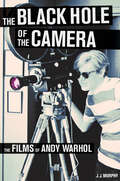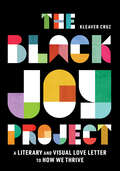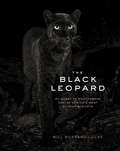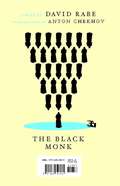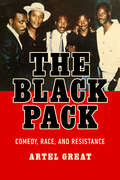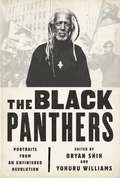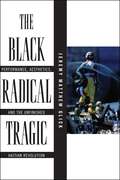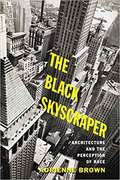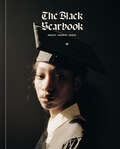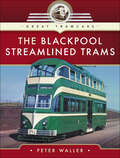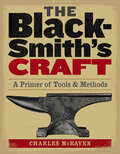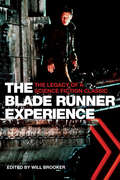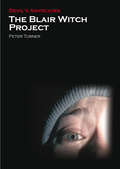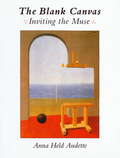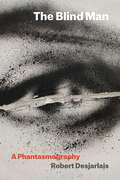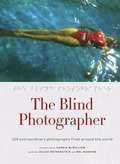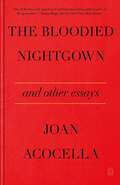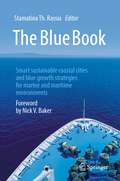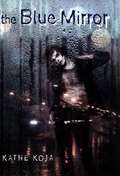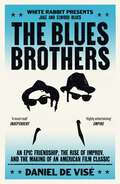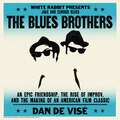- Table View
- List View
The Black Hole of the Camera: The Films of Andy Warhol
by J. J. MurphyAndy Warhol, one of the twentieth century’s major visual artists, was a prolific filmmaker who made hundreds of films, many of them—Sleep, Empire, Blow Job, The Chelsea Girls, and Blue Movie—seminal but misunderstood contributions to the history of American cinema. In the first comprehensive study of Warhol’s films, J.J. Murphy provides a detailed survey and analysis. He discusses Warhol’s early films, sound portraits, involvement with multimedia (including The Velvet Underground), and sexploitation films, as well as the more commercial works he produced for Paul Morrissey in the late 1960s and early 1970s. Murphy’s close readings of the films illuminate Warhol’s brilliant collaborations with writers, performers, other artists, and filmmakers. The book further demonstrates how Warhol’s use of the camera transformed the events being filmed and how his own unique brand of psychodrama created dramatic tension within the works.
The Black Joy Project
by Kleaver CruzThe perfect holiday gift for the book lover, art enthusiast and freedom fighter in your lifeFeaturing 117 full-color photos and eight breathtaking essays on a force that fuels Black life all around the globe, this is Humans of New York meets The Black Book"A patchwork quilt of visually stunning images, captured moments of triumph, antidotes to trauma narratives and rich, ebullient emotional and verbal spice for the soul." – Michael W. Twitty, culinary and cultural historian, and author of The Cooking Gene and Koshersoul"In literature, there are some books that transcend mere pages and ink, becoming essential pieces of cultural expression. One such book poised to make its mark is The Black Joy Project…. This ambitious work breaks new ground." – EssenceBlack Joy is everywhere. From the bustling streets of Lagos to hip-hop blasting through apartment windows in the Bronx. From the wide-open coastal desert of Namibia to the lush slopes of Jamaica’s Blue Mountains. From the thriving tradition of Candomblé in Bahia to the innovative and trendsetting styles of Soweto, and beyond, Black Joy is present in every place that Black people exist. Now—at last—is a one-of-a-kind celebration of this truth and a life-giving testament to one of the most essential forces that fuels Black life: The Black Joy Project.International in the scale, fist-raising in the prose, and chockfull of gorgeous works by dozens of acclaimed artists, The Black Joy Project does what no other book has ever done. In words and art, it puts joy on the same track as protest and resistance … because that is how life is actually lived. Uprisings in the street, with music as accompaniment. Heartbreaking funerals followed by second line parades. Microaggressions in the office, then coming home to a warm hug and a garden of lilacs. The list goes on.Black Joy is always held in tension with broader systemic wounds. It is a powerful, historically important salve that allows us to keep going and reimagine new ways of being. The Black Joy Project captures these dual realities to incredible, unforgettable effect.The brainchild of educator and activist Kleaver Cruz, The Black Joy Project is an extension of a real-world initiative of the same name. It has become a source of healing and regeneration for Black people of all backgrounds and identities. Long overdue and somehow still worth the wait, The Black Joy Project is a necessary addition for any book lover, art enthusiast, or freedom fighter. And begs the question, What does Black Joy mean to you?
The Black Leopard: My Quest to Photograph One of Africa's Most Elusive Big Cats
by Will Burrard-LucasThis inspiring book tells the story of a photographer's journey to find the mysterious black leopard.There are few creatures as gorgeous and elusive as the black leopard. In Africa, these magnificent cats are so rare as to be the stuff of legend. Will Burrard-Lucas's love for leopards began during his childhood in Tanzania and propelled him into a career as a wildlife photographer. In his quest to create intimate portraits of animals, he developed innovative technology, including a remotely controlled camera buggy and a high quality camera trap system for photographing nocturnal creatures. Then, one day in 2018, he heard about sightings of a young African black leopard in Kenya and with the help of people from the local community, he succeeded in capturing a series of high-quality photographs of the elusive cat. In this compelling and visually stunning book, Burrard-Lucas tells his story of creativity, entrepreneurship, and passion for wild animals, alongside awe-inspiring images of lions, elephants, and the black leopard itself.• STAR WILDLIFE PHOTOGRAPHER: Will Burrard-Lucas's passion for nature and expertise in camera technology have earned him coverage from National Geographic, The New York Times, and the BBC—and over 1 million fans enjoy his breathtaking work online.• NATURE'S HIDDEN WONDERS: Black leopards are individual animals in whom a gene mutation results in excess melanin and an elegant black coat. Most are found in Southeast Asia, where lush vegetation offers them camouflage. In the semiarid shrub lands of Africa, black leopards are extraordinarily rare. Burrard-Lucas's images—showing these beautiful creatures prowling their territory under cover of night—are vivid reminders of nature's hidden wonders.• INCREDIBLE STORY: This is an adventure story that takes place in remote and wild corners of Africa. It reveals Burrard-Lucas's devotion, vision, and innovation that led to him capturing photos that are not only incredibly rare, but also breathtakingly beautiful.Perfect for:• Aspiring and professional photographers• Photography buffs• Nature and animal lovers• Big cat enthusiasts• Conservationists• National Geographic readers• Fans of memoir and adventure stories• Travelers to Eastern and Southern Africa
The Black Monk and The Dog Problem: Two Plays
by David RabeThe Black Monk has been called a singular "collaboration" between two writers: Anton Chekhov and David Rabe. Based on Chekov's novella of the same name, Rabe's brilliant stage adaptation tells the story of Kovrin, the young philosophy student who returns from Moscow to the estate owned by Pesotsky, where he spent his youth. Kovrin and Pesotsky's daughter, Tanya, soon fall in love and plan to marry. But the appearance of an emissary from the unknown -- the black monk -- threatens to have a devastating effect on all of them. Trouble starts in when Teresa tells her brother Joey that this guy Ray did something to her with his dog in bed. Nobody seems to know exactly what happened, but they do know that somebody's got to pay. So what is The Dog Problem? It starts with being born into a world where the wrong thing said to the wrong person ignites a chain reaction of misplaced passions and galloping sentences that race to a deadly conclusion. The playful title is revealed to be a wry pun on the Cartesian mind/body problem, as Uncle Mal, the aging mobster, must face his turn to be the dog in this darkly funny play about men, women, sex, betrayal, and ghosts. Vastly different in their aesthetic, these two recent and highly praised plays embody all of the celebrated hallmarks of David Rabe's writing and art: unflinchingly honest and perceptive themes, starkly luminous dialogue, and the unsettling humor that have made him an icon of the American theater for more than forty years.
The Black Pack: Comedy, Race, and Resistance
by Artel GreatThe Black Pack: Comedy, Race & Resistance is the first book to chronicle the untold history behind the iconic collaborations between a legendary group of comedians—Eddie Murphy, Paul Mooney, Keenen Ivory Wayans, Robert Townsend, and Arsenio Hall—who joined forces as the “Black Pack” in the late 1980s to create a series of socially-charged comedies that revolutionized popular culture and transformed American comedy. Working together as writers, directors, producers, actors, and consultants, the Black Pack created some of the most provocative and enduring Black films and television shows of the twentieth century, including classic productions like In Living Color, Coming to America, Hollywood Shuffle, and The Arsenio Hall Show. The Black Pack collective was armed with a signature comedic style which combined politically-Black satire with edgy social humor that entertained millions, shattered box-office records, and slyly critiqued America’s racial condition. Amid escalating social tensions in the 1980s, the Black Pack’s comedic output transformed anger into art, wielding the cloak of humor as a rebellious tool to confront unjust business practices in Hollywood and challenge racial narratives embedded in American culture. Their work empowered unapologetically Black voices and expanded creative possibilities for Black artists in the entertainment industry. In The Black Pack, Artel Great delivers the most comprehensive analysis of this groundbreaking comedy collective, uncovering how the group’s socially and politically-charged humor defied systemic barriers to achieve unprecedented commercial success and establish a cultural legacy that continues to inspire media creators today and across new generations.
The Black Panthers: Portraits from an Unfinished Revolution (E-duke Books Scholarly Collection)
by Peniel E. Joseph Yohuru Williams Bryan Shih"Brilliant, painful, enlightening, tearful, tragic, sad, and funny, this photo-essay book is at its core about healing, and about the social justice work that still needs to be done in the era of hip-hop, Black Lives Matter, and the historic presidency of Barack Obama.” -Kevin Powell, author of The Education of Kevin Powell: A Boy's Journey into Manhood"A brilliantly conceived volume. Bryan Shih and Yohuru Williams demonstrate why the Panthers' story-its lessons and failures-even fifty years after its founding remains key to understanding national and international struggles for freedom and justice today.” -Cheryl Finley, professor and director of visual studies, Cornell UniversityEven fifty years after it was founded, the Black Panther Party remains one of the most misunderstood political organizations of the twentieth century. But beyond the labels of "extremist” and "violent” that have marked the party, and beyond charismatic leaders like Huey Newton, Bobby Seale, and Eldridge Cleaver, were the ordinary men and women who made up the Panther rank and file.In The Black Panthers, photojournalist Bryan Shih and historian Yohuru Williams offer a reappraisal of the party's history and legacy. Through stunning portraits and interviews with surviving Panthers, as well as illuminating essays by leading scholars, The Black Panthers reveals party members' grit and battle scars-and the undying love for the people that kept them going.
The Black Radical Tragic: Performance, Aesthetics, and the Unfinished Haitian Revolution (America and the Long 19th Century #2)
by Jeremy Matthew Glick2017 Nicolás Guillén Outstanding Book Award presented by the Caribbean Philosophical AssociationAs the first successful revolution emanating from a slave rebellion, the Haitian Revolution remains an inspired site of investigation for a remarkable range of artists and activist-intellectuals in the African Diaspora.In The Black Radical Tragic, Jeremy Matthew Glick examines twentieth-century performances engaging the revolution as laboratories for political thinking. Asking readers to consider the revolution less a fixed event than an ongoing and open-ended history resonating across the work of Atlantic world intellectuals, Glick argues that these writers use the Haitian Revolution as a watershed to chart their own radical political paths, animating, enriching, and framing their artistic and scholarly projects. Spanning the disciplines of literature, philosophy, and political thought, The Black Radical Tragic explores work from Lorraine Hansberry, Sergei Eisenstein, Edouard Glissant, Malcolm X, and others, ultimately enacting a speculative encounter between Bertolt Brecht and C.L.R. James to reconsider the relationship between tragedy and revolution. In its grand refusal to forget, The Black Radical Tragic demonstrates how the Haitian Revolution has influenced the ideas of freedom and self-determination that have propelled Black radical struggles throughout the modern era.
The Black Skyscraper: Architecture And The Perception Of Race
by Adrienne BrownWith the development of the first skyscrapers in the 1880s, urban built environments could expand vertically as well as horizontally. Tall buildings emerged in growing cities to house and manage the large and racially diverse populations of migrants and immigrants flocking to their centers following Reconstruction. Beginning with Chicago's early 10-story towers and concluding with the 1931 erection of the 102-story Empire State Building, Adrienne Brown's The Black Skyscraper provides a detailed account of how scale and proximity shape our understanding of race. Over the next half-century, as city skylines grew, American writers imagined the new urban backdrop as an obstacle to racial differentiation. Examining works produced by writers, painters, architects, and laborers who grappled with the early skyscraper's outsized and disorienting dimensions, Brown explores this architecture's effects on how race was seen, read, and sensed at the turn of the twentieth century. In lesser-known works of apocalyptic science fiction, light romance, and Jazz Age melodrama, as well as in more canonical works by W. E. B. Du Bois, F. Scott Fitzgerald, Aaron Douglas, and Nella Larsen, the skyscraper mediates the process of seeing and being seen as a racialized subject. From its distancing apex—reducing bodies to specks—to the shadowy mega-blocks it formed at street level, the skyscraper called attention, Brown argues, to the malleable nature of perception. A highly interdisciplinary work, The Black Skyscraper reclaims the influence of race on modern architectural design as well as the less-well-understood effects these designs had on the experience and perception of race.
The Black Yearbook [Portraits and Stories]
by Adraint Khadafhi BerealA gripping exploration of the joys, hardships, and truths of Black students through intimate, honest dialogues and stunning photography, with a foreword by Kiese Laymon, author of Heavy&“A radical, reverential, and restorative document of community.&”—Rebecca Bengal, author of Strange Hours: Photography, Memory, and the Lives of ArtistsWhen photographer Adraint Bereal graduated from the University of Texas, he self-published an impressive volume of portraits, personal statements, and interviews that explored UT's campus culture and offered an intimate look at the lives of Black students matriculating within a majority white space. Bereal's work was inspired by his first photo exhibition at the George Washington Carver Museum in Austin, entitled 1.7, that unearthed the experiences of the 925 Black men that made up just 1.7% of UT's total 52,000 student body.Now Bereal expands the scope of his original project and visits colleges nationwide, from Historically Black Colleges and Universities (HBCUs) to predominantly white institutions to trade schools and more. Rather than dwelling on the monolith of trauma often associated with Black narratives, Bereal is dedicated to using honest dialogue to share stories of true joy and triumph amidst the hardships, prejudices, and internal struggles. Using an exciting and eclectic design approach to accompany the portraits and stories, each individual profile effectively conveys the interviewee's unique voice, tone, and background.The Black Yearbook reframes society's stereotypical perception of higher education by representing and celebrating the wide range of Black experiences on campuses.
The Blackpool Streamlined Trams (Great Tramcars Ser.)
by Peter Waller“What a variety are pictured here! Double deck ‘balloon’ cars, single deckers including open topped cars and various illuminated cars, a specialty of the town.” —York Model Engineers newsletterIn the early 1930s the tramcar in Blackpool was at a crossroads; the system needed investment in both new track and new trams while there was a serious threat that the “town” routes might be converted to bus operation.The appointment of Walter Luff as the new general manager was, however, to prove a turning point. Working closely with English Electric, based in nearby Preston, Luff developed a series of streamlined trams—both single-deck and double-deck—that were to revolutionize the town’s tramway. By the end of 1930s, the corporation had acquired more than 100 new trams—the majority built by English Electric but with twenty coming from Brush—that ensured the survival not only of the key route along the Promenade to Fleetwood but also of the bulk of the “town” routes.Over the next seventy years these trams were to form the cornerstone of the Blackpool system. It was only with the modernization of the system in the first decade of the 20th century that, finally, they became largely obsolete but still, as part of the heritage fleet, they remain very much part of the contemporary Blackpool scene.This book examines the history of Blackpool’s streamlined trams of the 1930s from development through to preservation.“An important addition to the more straightforward business and picture book histories of the Blackpool tram network which local historians and industrial archaeologists will find of great value aiding future studies of this subject.” —Transactions of the Lancashire and Cheshire Antiquarian Society
The Blacksmith's Craft: A Primer of Tools & Methods
by Charles McRavenGet that metal hot and start hammering! Setting up your own forge and crafting everyday items is easier than you might think. With simple methods, easy-to-follow photographs, and insightful tips, you’ll soon be creating items of lasting beauty and durability from iron and steel.
The Blade Runner Experience: The Legacy of a Science Fiction Classic
by Will BrookerSince its release in 1982, Ridley Scott's Blade Runner, based on Philip K. Dick's novel Do Androids Dream of Electric Sheep?, has remained a cult classic through its depiction of a futuristic Los Angeles; its complex, enigmatic plot; and its underlying questions about the nature of human identity. The Blade Runner Experience: The Legacy of a Science Fiction Classic examines the film in a broad context, examining its relationship to the original novel, the PC game, the series of sequels, and the many films influenced by its style and themes. It investigates Blade Runner online fandom and asks how the film's future city compares to the present-day Los Angeles, and it revisits the film to pose surprising new questions about its characters and their world.
The Blade Runner Experience: The Legacy of a Science Fiction Classic
by Will BrookerSince its release in 1982, Ridley Scott's Blade Runner, based on Philip K. Dick's novel Do Androids Dream of Electric Sheep?, has remained a cult classic through its depiction of a futuristic Los Angeles; its complex, enigmatic plot; and its underlying questions about the nature of human identity. The Blade Runner Experience: The Legacy of a Science Fiction Classic examines the film in a broad context, examining its relationship to the original novel, the PC game, the series of sequels, and the many films influenced by its style and themes. It investigates Blade Runner online fandom and asks how the film's future city compares to the present-day Los Angeles, and it revisits the film to pose surprising new questions about its characters and their world.
The Blair Witch Project
by Peter TurnerTells the story of the film from conception and production to audience response.
The Blair Witch Project
by Peter TurnerFew films have had the influence and impact of The Blair Witch Project (1999). Its arrival was a horror cinema palette cleanser after a decade of serial killers and postmodern intertextuality, a bare bones 'found footage' trend setter. In this Devil's Advocate, Peter Turner tells the story of the film from his conception and production then provides a unique analysis of the techniques used, their appeal to audiences and the themes that helped make the film such an international hit, including the pionerring internet marketing.
The Blank Canvas
by Anna Held AudetteThe Blank Canvas offers solid advice for everyone who struggles with artist's block or other problems of creative expression, including: drawing subject matter from unexpected sources, mining one's daily visual responses for images, overcoming self-doubt and criticism, making choices when torn between several ideas, and getting started on assignments.
The Blind Man: A Phantasmography (Thinking from Elsewhere)
by Robert DesjarlaisThe Blind Man: A Phantasmography examines the complicated forces of perception, imagination, and phantasms of encounter in the contemporary world. In considering photographs he took while he was traveling in France, anthropologist and writer Robert Desjarlais reflects on a few pictures that show the features of a man, apparently blind, who begs for money at a religious site in Paris, frequented by tourists. In perceiving this stranger and the images his appearance projects, he begins to imagine what this man’s life is like and how he perceives the world around him.Written in journal form, the book narrates Desjarlais’s pursuit of the man portrayed in the photographs. He travels to Paris and tries to meet with him. Eventually, Desjarlais becomes unsure as to what he sees, hears, or remembers. Through these interpretive dilemmas he senses the complexities of perception, where all is multiple, shifting, spectral, a surge of phantasms in which the actual and the imagined are endlessly blurred and intertwined. His mind shifts from thinking about photographs and images to being fixed on the visceral force of apparitions. His own vision is affected in a troubling way.Composed of an intricate weave of text and image, The Blind Man attends to pressing issues in contemporary life: the fraught dimensions of photographic capture; encounters with others and alterity; the politics of looking; media images of violence and abjection; and the nature of fantasy and imaginative construal. Through a wide-ranging inquiry into histories of imagination, Desjarlais inscribes the need for a “phantasmography”—a writing of phantasms, a graphic inscription of the flows and currents of fantasy and fabulation.
The Blind Photographer
by Candia Mcwilliam Julian RothensteinThe blind photographer cannot see a butterfly perched perfectly still on a flower, a bowl of sweet-smelling fruit, or a child's rattle on a darkened floor, but the mind's eye is sharply focused. How then, do blind or partially sighted people capture such extraordinary images? The photographs in this revelatory book suggest a deeper truth: that blindness is itself a kind of seeing, and that those who can see are often blind to the strangeness and beauty of the world around them. As the blind photographer Evgen Bavcar writes, "Photography must belong to the blind, who in their daily existence have learned to become the masters of camera obscura." Through the photographs of more than fifty blind or partially sighted people from around the world, this exhilarating book--the first to explore this phenomenon in all its vibrancy and diversity--will make you see differently.
The Bloodied Nightgown and Other Essays
by Joan AcocellaA collection of the New Yorker critic’s finest essays, which examine the books that reveal and record our world.Joan Acocella was “one of our finest cultural critics” (Edward Hirsch), and she had the rare ability to examine literature and unearth the lives contained within it—its authors, its subjects, and the communities from which it springs. In her hands, arts criticism was a celebration and an investigation, and her essays pulse with unadulterated enthusiasm. As Kathryn Harrison wrote in The New York Times Book Review, “Hers is a vision that allows art its mystery but not its pretensions, to which she is acutely sensitive. What better instincts could a critic have?”The Bloodied Nightgown and Other Essays gathers twenty-four essays from the final decade and a half of Acocella’s career, as well as an introduction that frames her simple preoccupations: “life and art.” In agile, inspired prose, she moves from J. R. R. Tolkien’s translation of Beowulf to the life of Richard Pryor, from surveying profanity to untangling the book of Job. Her appetite (and reading list) knew no bounds. This collection is a joy and a revelation, a library in itself, and Acocella is our dream companion among its shelves.Includes 25 black-and-white images
The Blue Bear
by Lynn schoolerHis body twisted by adolescent scoliosis, Lynn Schooler's soul was scarred from the loneliness of someone who, at an early age, stood 'at a strange angle to the rest of the world'. He made a life on the slim crescent of remote Alaskan coastline surrounding the city of Juneau, a place where he was least likely to encounter people. In 1990, celebrated Japanese photographer Michio Hoshino hired Schooler to help him shoot a segment on humpback whales in Glacier Bay, and the two formed a profound friendship. Their conversations often revolved around the glacier bear (known as the blue bear for its unique granite-coloured fur), a nearly extinct creature so rare that it is shrouded in legend. Together the two men became obsessed with finding the animal, every year searching through Ice-Age vistas to capture the blue bear on film. Their obsession cost Hoshino his life when he was killed by a grizzly bear - but alone in the eighth year, Schooler finally found and photographed the elusive creature.
The Blue Book: Smart sustainable coastal cities and blue growth strategies for marine and maritime environments
by Stamatina Th. RassiaThis volume offers a wealth of results written by experts from interdisciplinary fields, contributing on a diversity of topics targeting marine and maritime environmental sustainability in coastal and ocean-related areas. The reader will benefit from the diversity and breadth of topical coverage as well as concepts conveyed from a variety researchers. The book serves as an open knowledge platform combining many aspects of SDG #11 including naval architecture and marine engineering, ecology, biomedical informatics, public health, architecture engineering and building physics, nanotechnology as well as advanced technologies, innovation and related fields. The broad range of topics cover ecology, shipping, and health related issues. Specifically, the book presents chapters on the following: · Shipping and ecology · Topics of ocean wildlife and mega-fauna protection · Big Data and sustainable applications for healthy and safe coastal cities · Smart sustainable humanitarian assistance methods using large vessels · Smart coastal city tourist activity, mobility management · Urban climate condition mitigation · Historical analysis of the case of disease outbreaks onboard ships · Monitoring, simulating and decision making while developing housing at sea, such as in cruise-ships · Conducting feasibility assessment for outbreak prevention following real-time, systematic disease detection on cruise ships · Technological approaches for cruise ship disease propagation monitoring · Scenario testing for sensors and actuators deployment to prevent and mitigate epidemics on cruise ships, as well as methods for improving biological safety on ships using nanotechnology The book is expected to engage researchers in multidisciplinary areas as well as students and interested readers.
The Blue Mirror
by Kathe KojaSeventeen-year-old loner Maggy Klass, who frequently seeks refuge from her alcoholic mother's apartment by sitting and drawing in a local cafe, becomes involved in a destructive relationship with a charismatic homeless youth named Cole.
The Blues Brothers: An Epic Friendship, the Rise of Improv, and the Making of an American Film Classic
by Daniel de ViséThe Blues Brothers hit theatres on June 20, 1980. Their scripted mission was to save a local Chicago orphanage; but Aykroyd, who conceived and wrote much of the film, had a greater mission: to honour the then-seemingly forgotten tradition of rhythm and blues, some of whose greatest artists - Aretha Franklin, James Brown, John Lee Hooker, Cab Calloway, Ray Charles - made the film as unforgettable as its wild car chases. Much delayed and vastly over budget, beset by mercurial and oft drugged-out stars, The Blues Brothers opened to outraged reviews. However, in the 44 years since it has been acknowledged a classic: inducted into the National Film Registry for its cultural significance, even declared a 'Catholic classic' by the Church itself, and re-aired thousands of times on television to huge worldwide audiences. It is, undeniably, one of the most significant films of the 20th century.The saga behind The Blues Brothers, as Daniel de Visé reveals, is epic, encompassing the colourful childhoods of Belushi and Aykroyd; the comedic revolution sparked by Harvard's Lampoon and Chicago's Second City; the birth and anecdote-rich, drug-filled early years of Saturday Night Live, where the Blues Brothers were born as an act amidst turmoil and rivalry; and, of course, the indelible behind-the-scenes narrative of how the film was made, scene by memorable scene. Based on original research and dozens of interviews probing the memories of principals from director John Landis and producer Bob Weiss to Aykroyd himself, The Blues Brothers illuminates an American masterpiece while vividly portraying the creative geniuses behind modern comedy.
The Blues Brothers: An Epic Friendship, the Rise of Improv, and the Making of an American Film Classic
by Daniel de ViséThe Blues Brothers hit theatres on June 20, 1980. Their scripted mission was to save a local Chicago orphanage; but Aykroyd, who conceived and wrote much of the film, had a greater mission: to honour the then-seemingly forgotten tradition of rhythm and blues, some of whose greatest artists - Aretha Franklin, James Brown, John Lee Hooker, Cab Calloway, Ray Charles - made the film as unforgettable as its wild car chases. Much delayed and vastly over budget, beset by mercurial and oft drugged-out stars, The Blues Brothers opened to outraged reviews. However, in the 44 years since it has been acknowledged a classic: inducted into the National Film Registry for its cultural significance, even declared a 'Catholic classic' by the Church itself, and re-aired thousands of times on television to huge worldwide audiences. It is, undeniably, one of the most significant films of the 20th century.The saga behind The Blues Brothers, as Daniel de Visé reveals, is epic, encompassing the colourful childhoods of Belushi and Aykroyd; the comedic revolution sparked by Harvard's Lampoon and Chicago's Second City; the birth and anecdote-rich, drug-filled early years of Saturday Night Live, where the Blues Brothers were born as an act amidst turmoil and rivalry; and, of course, the indelible behind-the-scenes narrative of how the film was made, scene by memorable scene. Based on original research and dozens of interviews probing the memories of principals from director John Landis and producer Bob Weiss to Aykroyd himself, The Blues Brothers illuminates an American masterpiece while vividly portraying the creative geniuses behind modern comedy.
The Blues Brothers: An Epic Friendship, the Rise of Improv, and the Making of an American Film Classic
by Daniel de ViséThe Blues Brothers hit theatres on June 20, 1980. Their scripted mission was to save a local Chicago orphanage; but Aykroyd, who conceived and wrote much of the film, had a greater mission: to honour the then-seemingly forgotten tradition of rhythm and blues, some of whose greatest artists - Aretha Franklin, James Brown, John Lee Hooker, Cab Calloway, Ray Charles - made the film as unforgettable as its wild car chases. Much delayed and vastly over budget, beset by mercurial and oft drugged-out stars, The Blues Brothers opened to outraged reviews. However, in the 44 years since it has been acknowledged a classic: inducted into the National Film Registry for its cultural significance, even declared a 'Catholic classic' by the Church itself, and re-aired thousands of times on television to huge worldwide audiences. It is, undeniably, one of the most significant films of the 20th century.The saga behind The Blues Brothers, as Daniel de Visé reveals, is epic, encompassing the colourful childhoods of Belushi and Aykroyd; the comedic revolution sparked by Harvard's Lampoon and Chicago's Second City; the birth and anecdote-rich, drug-filled early years of Saturday Night Live, where the Blues Brothers were born as an act amidst turmoil and rivalry; and, of course, the indelible behind-the-scenes narrative of how the film was made, scene by memorable scene. Based on original research and dozens of interviews probing the memories of principals from director John Landis and producer Bob Weiss to Aykroyd himself, The Blues Brothers illuminates an American masterpiece while vividly portraying the creative geniuses behind modern comedy.
